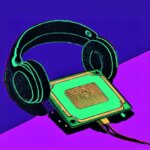Tic-tac-toe superposition entangles quantum advantage

|
Getting your Trinity Audio player ready...
|
If anyone says that playing computer games is a waste of time, then you should challenge them to a few rounds of quantum tic-tac-toe. Positioning noughts and crosses on a three-by-three board, rendered online in a web browser, can – thanks to a few rule updates – quickly teach players the basics of quantum computing. And the more people that can get to grips with key quantum principles such as superposition and entanglement, the deeper the discussions that become possible between investors and developers.
Centers of excellence such as Quantum Delta NL – the national ecosystem for quantum computing in the Netherlands – clearly recognize the power of computer games to teach quantum fundamentals. And the organization has a free-to-play version of quantum tic-tac-toe available via its website.
Indiana Jones and the temple of quantum tic-tac-toe
Tic-tac-toe – a game that dates back to 1300 BC and has been found etched into ancient Egyptian roof tiles – is, at first sight, an unlikely candidate for making quantum computing less puzzling. But that changed in 2002 when American Institute of Aeronautics and Astronautics (AIAA) members Allan Goff, Dale Lehmann, and Joel Siegel published an update to the rules dubbed ‘Quantum Tic-Tac-Toe, Spooky-Coins & Magic-Envelopes, as Metaphors for Relativistic Quantum Physics’.
Tweaking the gameplay, enabled noughts (or crosses) played on a single turn to exist on multiple squares at once – a concept known as superposition when considering quantum machines. And this marks the beginning of a fascinating educational journey taken by players who emerge at the end of the game with useful insights into the working of quantum computers.
To model entanglement – another key feature of the quantum universe – multiple squares on a quantum tic-tac-toe board become interlinked as the game progresses. And eventually, a loop forms – at which point the circular entanglement collapses. “Collapses are how the quantum moves are converted to classical moves,” writes AIAA member Goff. “Half of each pair of the involved mixed state moves are eliminated.”
For example, two squares may host a superposition of crosses – indicating that quantum bits (or qubits) can occupy multiple states at the same time. And those locations may be entangled with other pairs of noughts. But when a measurement of the system takes place, that information collapses into the final (and most probable, in the case of an industrial quantum machine) solution.
Once observed, a cross in the middle square – to continue the gameplay example – can’t be in two places at once, and that triggers a logical mapping of linked, or entangled, states on the quantum tic-tac-toe board. In the game, properties can be in any of nine possible states (represented by squares on the board). And the rules update certainly raises the interest of players, which reflects how fascinating quantum computers become once you can get a foothold into how quantum computers work.
Game space, branchial space. What does tic-tac-toe have to do with quantum mechanics? They're both multicomputational systems. And in studying games & puzzles we have a way to "humanize" multicomputation.https://t.co/2YfgOrCOsZ pic.twitter.com/K2RBCbdtJT
— Stephen Wolfram (@stephen_wolfram) June 8, 2022
And if online computer games aren’t your thing, but you still want to understand what makes quantum computers different from classical machines, you can download and print a quantum tic-tac-toe template to play offline.
Quantum tic-tac-toe even has its own entry on BoardGameGeek, where the updated rules score 5.8 out of 10. For comparison, Monopoly – the classic board game dating back to 1935, where players battle the real estate market – has an average rating of 4.4. And both Apple’s App Store and the Google Play Store have quantum tic-tac-toe apps listed.
In fact, bringing things full circle, developers have programmed a quantum computer to play quantum tic-tac-toe. Chris Ferrie, a member of the Centre for Quantum Software and Information at the University of Technology Sydney, Australia, wrote back in 2021 about how he played Tic-tac-toe on a quantum computer – and won!
And there are other examples too of how programmers have used API’s and open-source libraries such as Qiskit to build quantum circuits on real quantum computing hardware. IBM made its first quantum computer available online in 2016 and the service remains popular today.
Tic-tac-toe – a technology trailblazer
Tic-tac-toe may sound like a quirky framework for teaching new users about quantum computers, but the game actually has a strong track record in highlighting advances in technology. One of the first titles in the history of video games was – you’ve guessed it – tic-tac-toe. But the regular version, not the Monopoly beating quantum edition.
Dubbed OXO, the early computer game demonstrated in the 1950s was programmed on the so-called Electronic Delay Storage Automatic Calculator (EDSAC) – a mainframe computer housed at the University of Cambridge, UK. The computer game, which was one of the first to display visuals on an electronic screen, even had an AI opponent.
More recently – in 2015 – researchers showed that it’s possible to play tic-tac-toe with a sugar-based molecular computer, which further boosts the game’s credentials as a technology trailblazer.
Since Goff and his collaborators first shared the idea of using tic-tac-toe as a how-to guide for mastering the basics of quantum computing, many others have contributed to the development of quantum tic-tac-toe. And the benefits of learning the concepts of quantum mechanics in a playful way is now well-recognized.
Experts have shown that tic-tac-toe not only helps in understanding superposition, entanglement, and other quantum principles. Game-based learning can also aid developers in getting to grips with how to program a quantum computer. For example, there are multiple tic-tac-toe variants that are implementable as a quantum circuit.

Game or multicomputational system? Quantum tic-tac-toe is both.
Programming tic-tac-toe on a quantum computer is a great way to become familiar with the key building blocks, such as identity (or ID) gates that maintain the real state of a qubit. Other logic includes the Pauli X gate that inverts a qubit’s status, and the use of a Hadamard gate to create superposition.
Today, the industrial applications of quantum computers – helping to solve complex logistics problems in unloading giant cargo ships and distributing goods to national supermarkets – is attracting interest from customers. But it’s difficult selling a solution that clients struggle to understand.
And this is exactly where quantum tic-tac-toe could make a difference by painting a clearer picture of spooky behavior that’s otherwise hard to comprehend.









